The Erin Condren monthly dashboard is a simple tool to help you stay organized, track goals, and manage tasks. Here’s how you can use it effectively:
Here’s how to make the most of your Erin Condren dashboard for tracking your goals:
Transform your Erin Condren dashboard into a practical habit-tracking system. In the notes section, create a grid with rows for habits like meditation, water intake, or exercise, and columns for each day. Use stickers, like dots or checkboxes, to track your progress. For weekly habits, try adding progress bars with different colors (e.g., green for health, blue for personal growth) to quickly see how you’re doing at a glance [1].
Dedicate a part of your dashboard to weekly reflection. Include spaces to note your successes, challenges, and any changes you need to make to stay on track [2]. Stickers with themes like "Winter Hygge" or "Starlit Sakura" can add a personal touch and keep the design motivating. This setup not only tracks your habit completion but also helps you evaluate their effectiveness, making your dashboard a powerful tool for achieving long-term goals [1][2].
Once your habits are organized, your dashboard can also double as an efficient way to manage events and important dates.
Spend 15 minutes each week reviewing and updating your dashboard. This quick habit ensures your system stays organized and visually appealing. Once your events are in order, you can focus on tailoring your dashboard to fit your personal style and planning preferences.
Add a vision board section to your dashboard to display motivational quotes, images, or artwork that align with your monthly goals [1]. This visual setup keeps you focused while adding a personal touch to your planning space. Stickers like ‘Lilac Dusk‘ or ‘Starlit Sakura’ can add flair while keeping the design cohesive.
Personalizing your dashboard doesn’t just make it look good – it can also keep you motivated to stay organized and hit your goals. To keep things functional, stick to 2-3 colors, use mind maps for brainstorming, and add decorative elements sparingly [1]. The trick is balancing style with practicality so your dashboard stays useful [2].
Here are a few tips for personalizing effectively:
Update your personalized elements weekly to keep them fresh and relevant. A dashboard that reflects your goals and style can help you start each month with focus and motivation.
The Erin Condren dashboard is designed to help you stay organized and achieve your goals. By combining goal tracking, habit monitoring, and personal touches, it becomes a system tailored to suit your needs.
The key to making it work lies in consistent use and regular updates. Test different layouts and tracking techniques to see what boosts your productivity. Stickers and color-coding can add flair, but use them thoughtfully to keep your dashboard both functional and visually appealing [1]. Taking time to review your setup regularly will help you spot areas for improvement and stay on track [2].
Once you have a solid setup, try experimenting with new ideas. Adjust layouts, explore different tracking styles, or add creative elements that fit your workflow. The vertical layout, for instance, offers flexibility while keeping things clear and purposeful [1].
With steady effort and a touch of creativity, your Erin Condren dashboard can be a valuable tool for staying organized and focused on your goals. The most effective dashboard is one that works seamlessly with your daily routine.
To stay organized, include specific plans, deadlines, and milestones in your monthly calendar. Here’s what to consider adding:
Use a color-coding system to separate work, personal, and family activities. You can also add stickers or decorative elements to highlight key dates, making your calendar both practical and visually appealing. A well-organized calendar helps you stay focused and manage your commitments effectively.
Stickers Made for Planning
Our custom stickers are a fuss-free way to brighten up your planner pages with perfectly-sized designs that add a spark of personality to every layout.
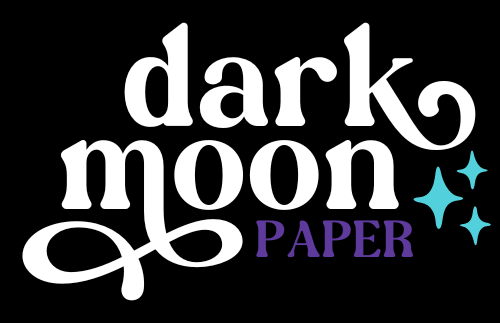
Why use planner stickers?
Planner stickers make organizing easy, fun, and personal! Add color, creativity, and structure to every page, transforming your planner into a tool that reflects you. Perfect for tracking, decorating, and staying inspired daily!
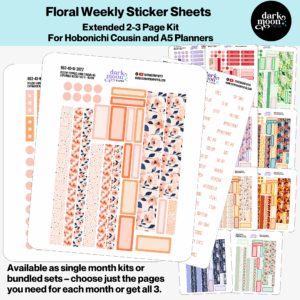
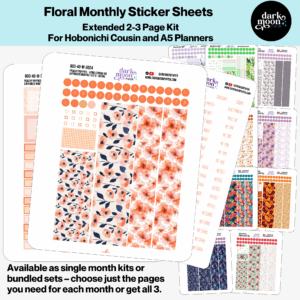
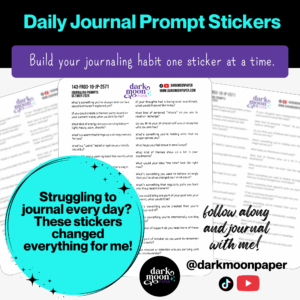
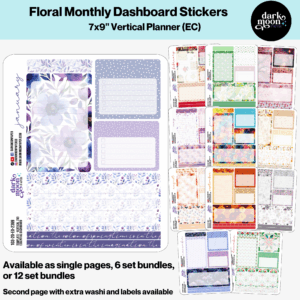
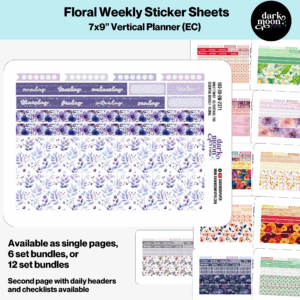
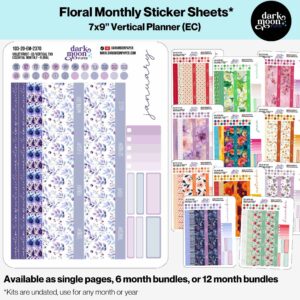
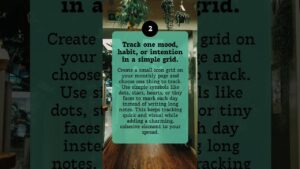
Hello and welcome!
I’m Kat, the artist behind Dark Moon Paper. I started this studio to blend my love of art, handwriting, and the small rituals that make everyday life feel magical. My sticker kits and creative resources are made to set the mood, spark ideas, and give you a little escape from the ordinary.
I create from a cozy studio in the Oregon woods, surrounded by nature and a clear view of the stars.
✨ Artistic inspiration for your planner. ✨